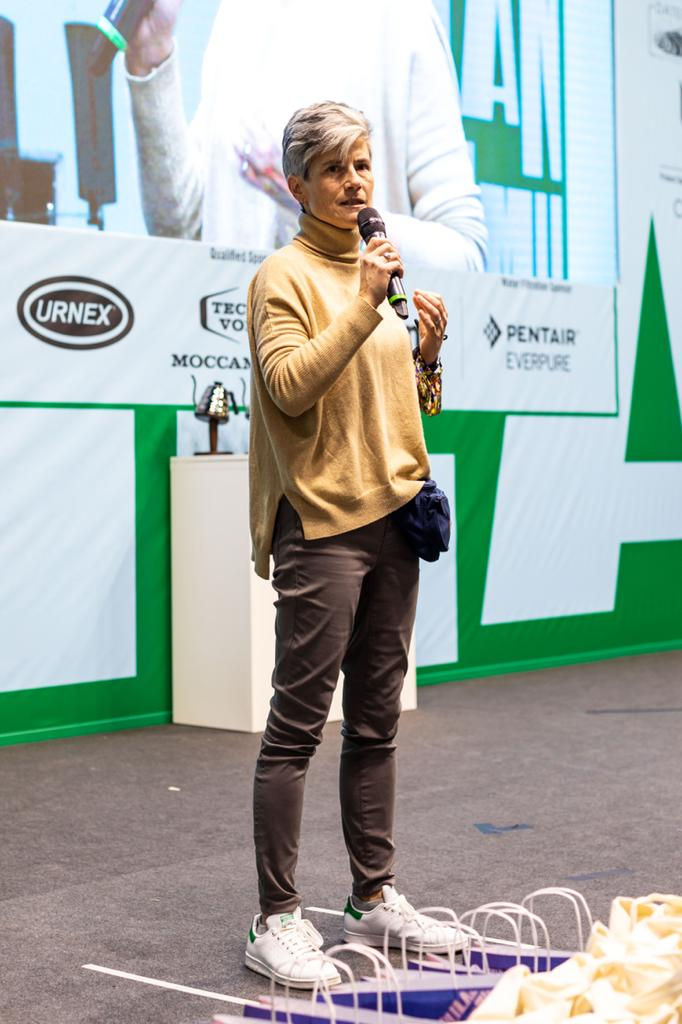Maria Cleaveland truly knows coffee, having worked on all sides of the business for nearly 30 years for big names like Starbucks, Peet’s, to the smaller, artisanal brands like Equator Coffee. We caught up with her on the plane back from, Host Milano, the world’s largest trade show for coffee, which also included the World Coffee Championships–contests for baristas, best brews, latte art, and more…basically the “Olympics of Coffee.” Since Maria’s personal motto is, “helping coffee suck less since 1993,” we were curious to know what trends are percolating.
Here are her top 5:

1. Post-pandemic consumers' focus on provenance continues to rise. True sustainability is now essential for companies and greenwashing will no longer hold up to consumer scrutiny. With the help of technology––blockchain and crypto––there will be more transparency in where money goes and who is getting paid. Brands need to work on marketing activities and communication strategies that cut through the clutter. Supporting the right causes from picking to production is imperative, organizations like the International Women’s Coffee Alliance (IWCA), which empowers women in the coffee industry, bring more economic stability to their families and communities. The IWCA creates linkages along the coffee value chain, encouraging women to become better business leaders no matter their position in the industry. Progress can be made and consumers know their choices (and money) matters.

2. New technologies in roasting, grinding, and preparing coffee are leveling the playing field to allow specialty products to compete at scale. For example, Brewbird, launching later this year, offers the world's most sustainable single-serve coffee planform. The Brewbird system delivers a fresh and local whole bean cup of coffee delivered in proprietary 100% backyard compostable packaging. New coffee brewers without boilers have been developed by 3Temp, these machines not only save energy as they use far less electricity, but the coffee also tastes incredible. Another example is a new modular grinder from San Remo, that allows for greater precision in grinding and dosing, allowing restaurants to switch from espresso, drip, or filter coffee on the fly, which reduces waste. Finally, we are seeing many equipment providers focusing on reducing milk waste and making bar flow easier with reduced staff levels.
3. Pop-up business models, pop-up carts, and the “amenitization” of the office and hotel lobby. More and more artisanal brands will be coming into commercial spaces as companies and hotels remove generic or big-brand convenience stores and in favor of smaller, more interesting, often local specialty shops. One expert from the commercial real estate sector said, “if the food is not as good at work as it is at home people won’t come back to the office.” Hotels are upgrading as well, putting pop-ups in lobbies that reflect the neighborhood.
4. Analytics increasing efficiency. Smart technology is helping restaurants to know what to supply and order, based on hard data and analytics. Coffee roasters are introducing new leasing models, some even allow paying for equipment on a per cup basis.
5. The talent war is amped up, the best employers will elevate HR to a true c-suite position. Emblematic of issues across the industry, Starbucks and other retailers are working through unionization efforts. Change is afoot with younger, more engaged workers, who want better treatment and working conditions. With the current worker shortage, the scale has tipped to favor employees, smart companies will see this as an opportunity to rewrite the script.
.png)